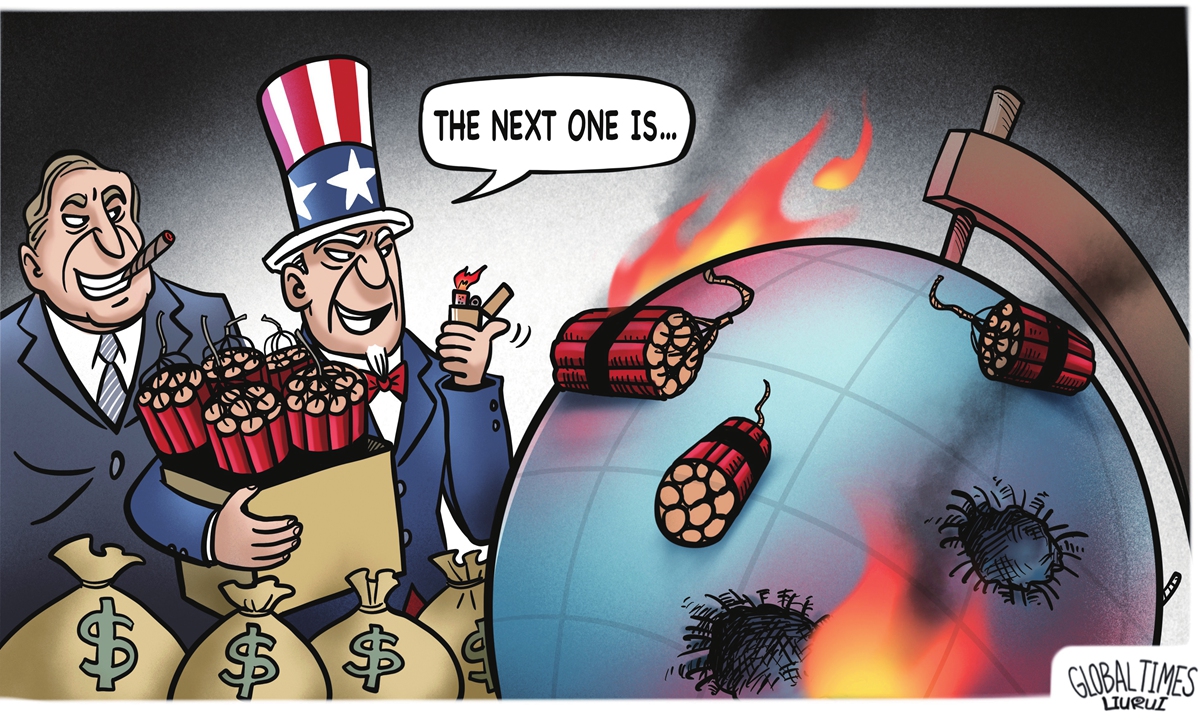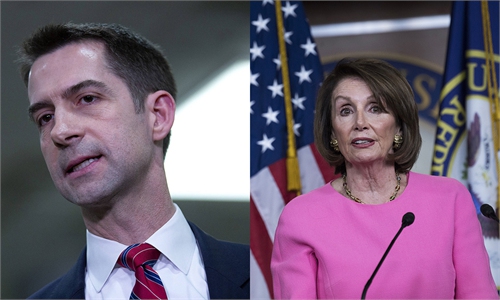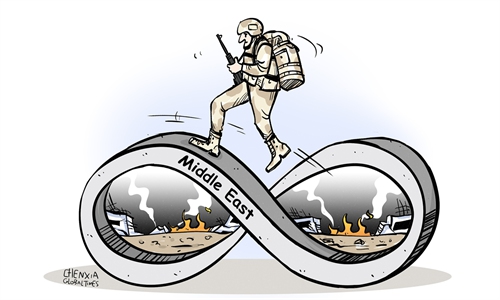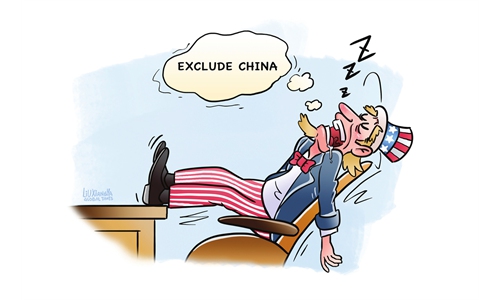US non-stop military drills with allies push Asia-Pacific toward more dangerous situation

Orchestrating destruction.Illustration: Liu Rui/GT
The conflicts in Ukraine and the Middle East have not distracted Washington from flexing its military muscles in the Asia-Pacific. Through one drill after another, the US is coercing regional countries into taking its side, further intensifying regional conflicts and transforming the Asia-Pacific into a more dangerous place.
From Wednesday to Thursday, US, Australian and Japanese warships conducted a trilateral joint operation in the South China Sea to "promote transparency, rule of law, freedom of navigation and all principles that underscore security and prosperity in the Indo-Pacific." On Monday, as a part of the ongoing Cope North 2024 multinational air exercise, more than 80 military aircraft and some 3,000 troops from the US, Japan, South Korea, Australia, Canada and France participated in an elephant walk, a close formation of aircraft taxiing en masse before takeoff, in Guam to flaunt the synergy of the six countries' air forces in the air.
Experts told the Global Times that these military drills, as an important part of the substantial implementation of the US' Indo-Pacific Strategy, intend to strengthen military cooperation between the US and its Asia-Pacific allies, but the real drive is to prepare for a possible clash against Beijing, Washington's imagined military enemy.
The US is taking greater steps to pave the way for its envisioned security layout in the Asia-Pacific region, as it is now determined to contain China through its Indo-Pacific Strategy, holding other countries hostage for its own selfish interests and to safeguard its global hegemony.
For regional countries, the message that the US is trying to convey through the air and naval exercises is very clear: They have to choose between standing with or against the US and its allies, and there can be no middle way.
As a result, this may stimulate a new arms race in Asia-Pacific and drag regional countries off the track of development and into crises. These US-led military drills are creating unrest, division and even potential conflicts in the region, fully demonstrating that the US, deep inside, only wants to see chaos across the globe.
It is not alarmist rhetoric to claim that Washington has already planted hidden dangers, which will undermine sustained regional stability. Just take a look at the Philippines and how it has stepped up its military action: According to local media reports, Philippine Defense Secretary Gilberto Teodoro Jr said on Tuesday during a visit to a Philippine Naval Base on Batanes' Mavulis Island that the country will set a higher "operational tempo for the Armed Forces of the Philippines" beginning this year.
To some extent, this plan is emboldened by the military exercises in the region led by the US, a close ally of the Philippines. Moreover, it is the belief that Washington has its back that Manila dares to make more provocative moves to challenge China in the South China Sea. However, the Philippines is sacrificing its national sovereignty to comply with the needs of the US' Indo-Pacific Strategy, becoming Washington's puppet and pawn in the region.
It is also worth noting that both the two military drills taking place this week featured the US, Japan and Australia, all three of which are Quad members. However, India, the fourth member of this quadrilateral partnership, was not seen.
As a non-ally of the other three Quad countries, India, for sure, has the right to choose what kind of cooperation it will engage in with the US and its allies based on its national interests. Compared to Tokyo and Canberra, New Delhi is pursuing a more independent foreign policy and military strategy instead of following Washington too closely. India's absence seems to prove once again that the country is not entirely on board with the other Quad countries, which dilutes the effects of this partnership as a weapon for the US to encircle China in the region.
Although the Ukraine crisis and the Middle East issue have consumed some of the energy and resources of Washington, from the perspective of its overall interests, the US will continue to focus on the Indo-Pacific and push forward its strategic objectives based on treating China as a systemic rival. It has already flamed the fire in Ukraine and kept the Middle East tensions going on, but Asia-Pacific should never become its next victim. Any dangerous move from the US that could escalate the regional situation has to be jointly opposed by Asia-Pacific countries.
The author is a reporter with the Global Times. xiawenxin@globalitmes.com.cn



